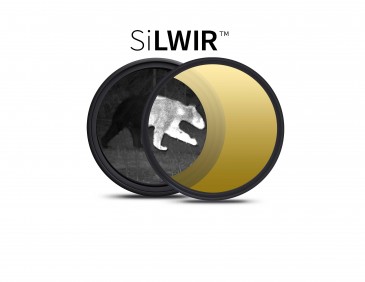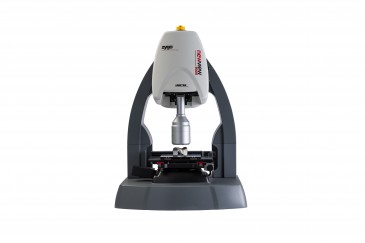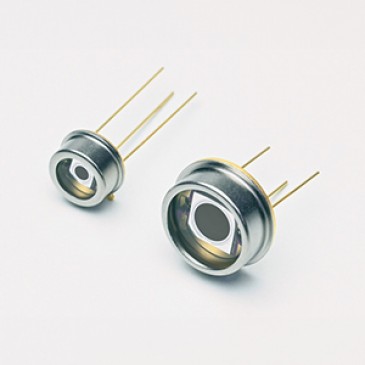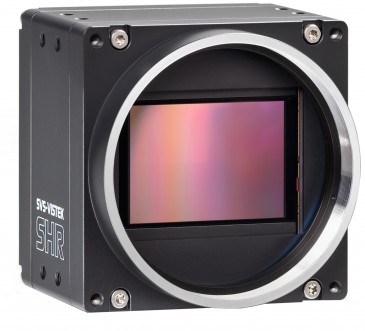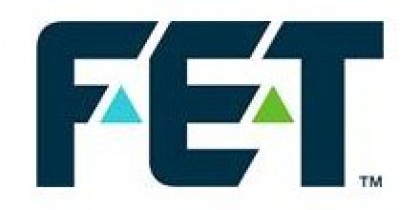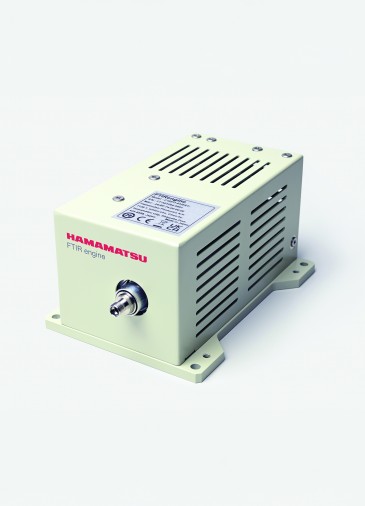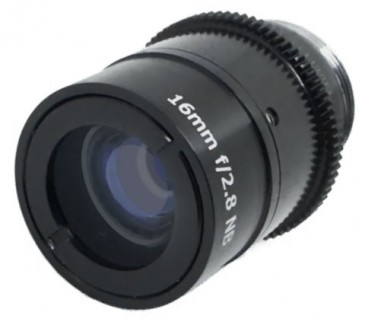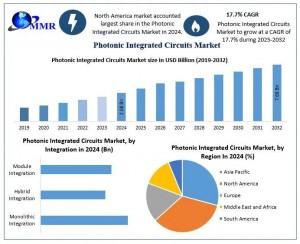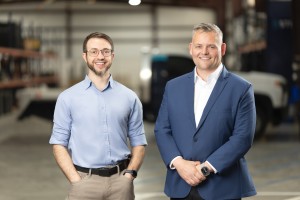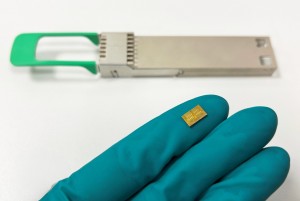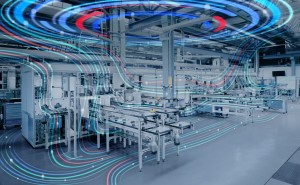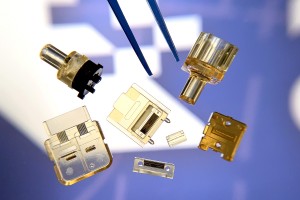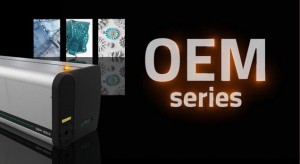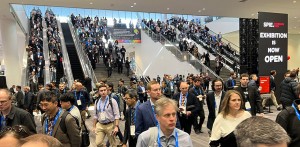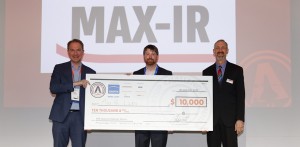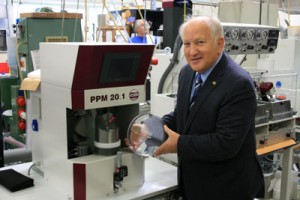
Novus Light Technologies Today provides first-hand insights into the drivers behind the leading companies in the many industries that make up our market. Robert Molenaar, European Editor, had the opportunity to interview Berndt Zingrebe, owner and CEO of Sill Optics GmbH & Co. KG, a leader in the optics manufacturing industry.
Novus Light Technologies Today (NLTT): How did your business develop in the first three quarters of 2012?
Sill Optics is doing very well and according to our forecasts. We almost doubled our sales in 2011 to 18.3 million Euro, since the global recession period of 2008/9 and are now positioning ourselves for the next growth spurt in the years to come. Being a true manufacturer of OEM optics in the photonics industry, our customers have made us focusing on machine building related, contemporary, automotive, aerospace and solar manufacturing applications, using our wide range of machine vision and laser optics. Traditionally, Sill Optics is producing lenses for profile projectors and various custom items.
NLTT: What is new in your industry and what are the trends technology-wise?
The photonics industry is currently increasing, thanks to several new technologies using LED and laser applications, and demands for better energy efficiency coming from many market areas. We noticed our customers increasing the power of their lasers, so we had to develop new lenses for higher laser power with reduced thermal behaviour, as well as for more homogeneous beam shaping and a sharper focus. We developed a new optics series for ultra-short pico- and femtosecond pulse lasers for which demands are strongly growing. We also launched a series of lenses for fiber lasers working in the mid-infrared at 1.55µm and 2µm used for the processing of new transparent polymers in the aerospace- and shipbuilding industries. To enable Sill Optics to step into all these new technology demands, we made a large investment in state-of-the-art production machines and test equipment to produce the precision aspheric lenses needed for this.
NLTT: How has the market changed in the recent years and how has your company adapted?
The global recession in 2008/9 has affected Sill Optics’ customers, too. However, instead of adapting the company by reducing staff and facilities, as many optics manufacturing companies did, we kept our production capacity and new product development capabilities on full strength and even invested in optical materials inventory, foreseeing a strong growth and production capacity need for the years coming immediately after the recession. And so it happened. In fact, even before the recession ended, our customers already approached us with large volume demands for existing and new products, and with shortest possible delivery time. So, Sill Optics was well-positioned to support them immediately and able to ramp up production extremely fast.
NLTT: What do you see as the main challenges currently in your business and how do you want to overcome them?
The technical circulation is running faster: product lifetime is getting shorter. Also, customers are requesting products with better, tighter specifications and made in shorter delivery times, fulfilling just-in-time delivery demands from their own customers. To keep pace with these developments, Sill Optics is continuously investing in more equipment: machines and measurement technology. We are employing additional staff: especially engineers and CAD designers. We are training more workers to handle the latest CNC machines. In addition, we are educating more apprentices, which is in my business philosophy the only way to obtain future high quality staff.
Customers are requesting products with better, tighter specifications and made in shorter delivery times.
Further, we recently started a large second expansion of our production area, increasing the total floor area to 7500m2, to get more space for the manufacturing of precision aspheric lens elements and of mechanical parts and optic housings. New large milling machines will set us in the position to manufacture exotic designs and cubic parts with sizes up to 500mm. With additional investments in CNC machines and coating equipment, the new production floors will fill up soon. However, this will significantly further improve Sill Optics’ flexibility and responsiveness to the demands of our customers. Besides, we are constantly finding solutions to overcome general issues related to optics manufacturing. This includes law-enforced environmental restrictions, the sharply raised cost of polishing materials with rare earth elements such as cerium oxide and the increasing energy bills.
NLTT: What significant trends do you see emerging in the next few years?
Looking at the major product ranges we have in house, we expect the following trends in the market:
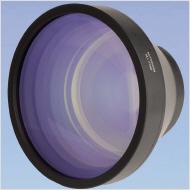
The requirements for laser optics will be driven by lasers featuring more power, shorter pulses and a larger range of different wavelengths. The machine-vision market is looking for lenses which can be used either with larger sensors, matrix sensors up to 24x36mm and line sensors up to 60mm, or with smaller sensors such as needed for endoscopes. Standard telecentric machine-vision lenses are available for object sizes of up to 100mm and we are developing lenses for over 300mm at the moment, based on our machine capabilities. We can produce other precision lens elements up to 400mm. The present grinding and polishing machines can handle sizes up to 1000mm.
Another trend we certainly cannot neglect is, that pixel sizes of sensors are becoming smaller and smaller. Sill Optics now produces high resolution telecentric lenses, able to resolve pixel sizes under 3.45 microns.
NLTT: Regionally… where are your customers located? Has that changed?
Based in Wendelstein, a small village just South of Nuremberg, we even have local customers in different industrial areas. In general, more than 50% of our customers are located in Germany. The other 50% is spread all over the world from the East to the West e.g., from Japan to America, and from North to South, e.g., from Finland to South Africa and Australia.
As Sill Optics is an OEM manufacturer, we do not produce final products for our customers. We are working together with equipment manufacturers using our products in their products. This is linked with markets for automotive, machine building and medicine, as well as more generally for inspection and machine vision. By exhibiting on shows, advertising in technical magazines and working with additional representatives all over the globe, we increase our number of customers constantly.
NLTT: How are you able to finance all the new investments for your company?
As Sill Optics has been successful since I bought the company in 1994, the contacts with our financial institutions are very good. We do not have problems to finance investments. On the other hand, I am very careful, only starting a new project, when I can at least 50% of the investment pay in cash. Except for the buildings, our technical investment contracts are not longer financed than for 3 years.
NLTT: What is your forecast for the rest of 2012 and for 2013 for your total business and for the specific industries you serve?
The remaining business until the end of 2012 will accumulate the turnover to a total of approximately 18 million Euro, which is similar as for 2011. According to plan, we had a year of stabilization after a few years of turbulent growth.
We can achieve growth in the coming years from the diversification in so many product areas.
With the additional capacity from the recent investments fully operational, we are forecasting 19 million Euro of sales in 2013, followed by 20 million Euro in 2014. However, automotive- and aerospace manufacturers are currently driving the production of machine builders mainly and more than a half of Sill Optics’ capacity is linked to them. As I foresee a slowing down car market and also a solar industry having lost power for new orders, even new technologies are not a guarantee for the continuation of success. In spite of this, we can achieve growth in the coming years from the diversification in so many product areas, that we always observe markets of industries increasing and decreasing. Currently, the workload in our design and prototype development departments is high, bringing us new production series for the coming years. This is coming along with a stable basic business from long-term customers. Some of our customers we are serving for more than 40 years, sometimes even with the same product.
Interviewed by Robert Molenaar, European Editor, Novus Light Technologies Today














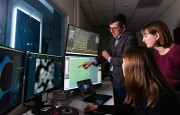

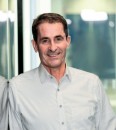





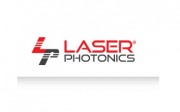
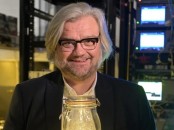
















 Back to Features
Back to Features